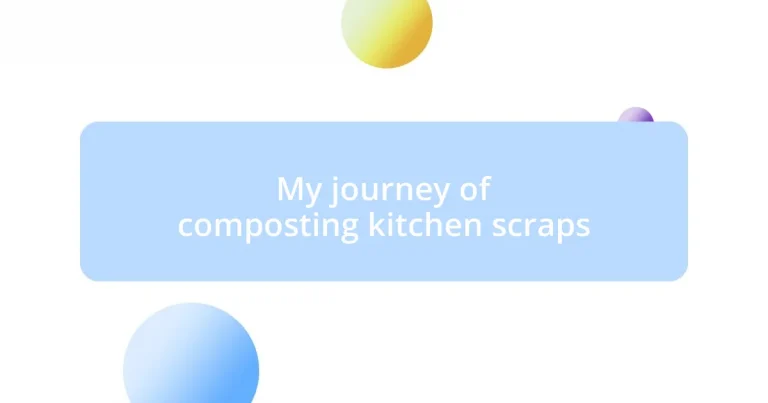Key takeaways:
- Composting kitchen scraps transforms waste into nutrient-rich compost, enhancing soil health and reducing landfill contributions.
- Choosing the right kitchen scraps, such as fruit peels and eggshells, is crucial for effective composting and plant nourishment.
- Regular maintenance, including turning the compost and monitoring moisture levels, promotes decomposition and produces high-quality compost.
- Using compost in the garden supports healthier plant growth, improves soil moisture retention, and fosters a deeper connection with the environment.
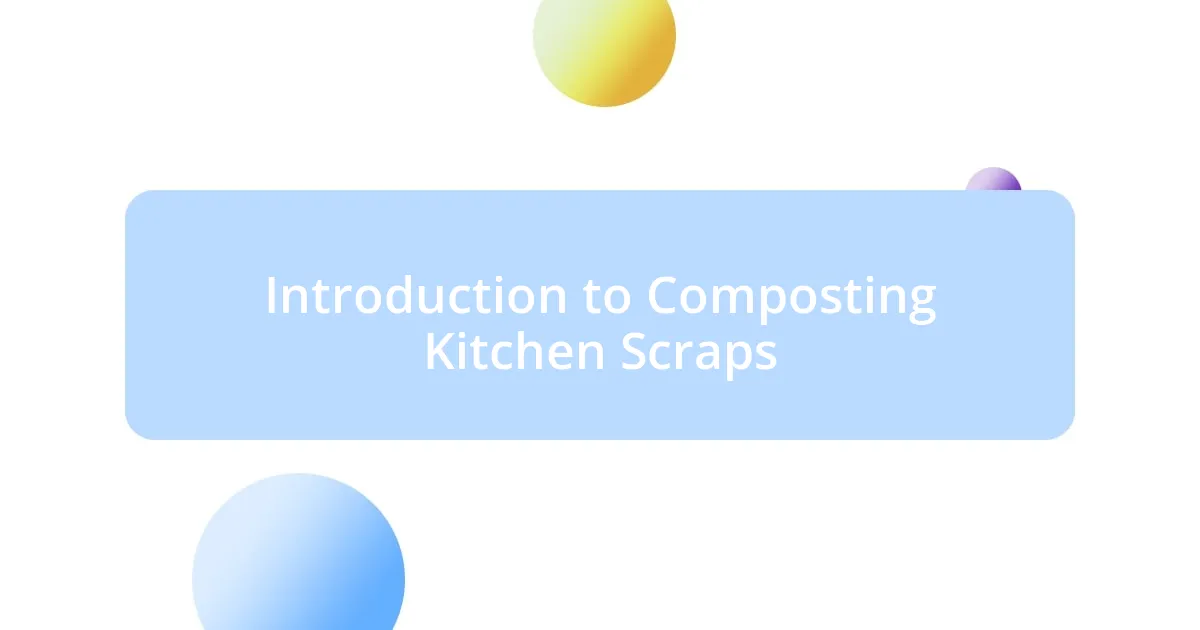
Introduction to Composting Kitchen Scraps
Composting kitchen scraps is more than just a practical solution for waste; it’s a transformative journey towards sustainability that truly resonates with me. When I first tossed my vegetable peels into a bin, I was surprised at how something seemingly insignificant could contribute to a bigger ecological impact. It sparked a curiosity in me about how much waste we produced and what we could do with it instead.
Have you ever wondered what happens to those apple cores and potato skins when you’re not just throwing them away mindlessly? Through composting, I realized that I could give these scraps a second life, turning them into nutrient-rich compost that nourishes the soil in my garden. It’s empowering to think of kitchen waste as more than garbage; it’s a resource waiting to be utilized.
In my experience, watching the decomposition process unfold has been nothing short of fascinating. There’s something really satisfying about observing how food scraps break down and contribute to the earth’s cycles. Each time I add to my compost pile, I’m reminded of the connection we all have to our planet and the little steps we can take to make a difference.
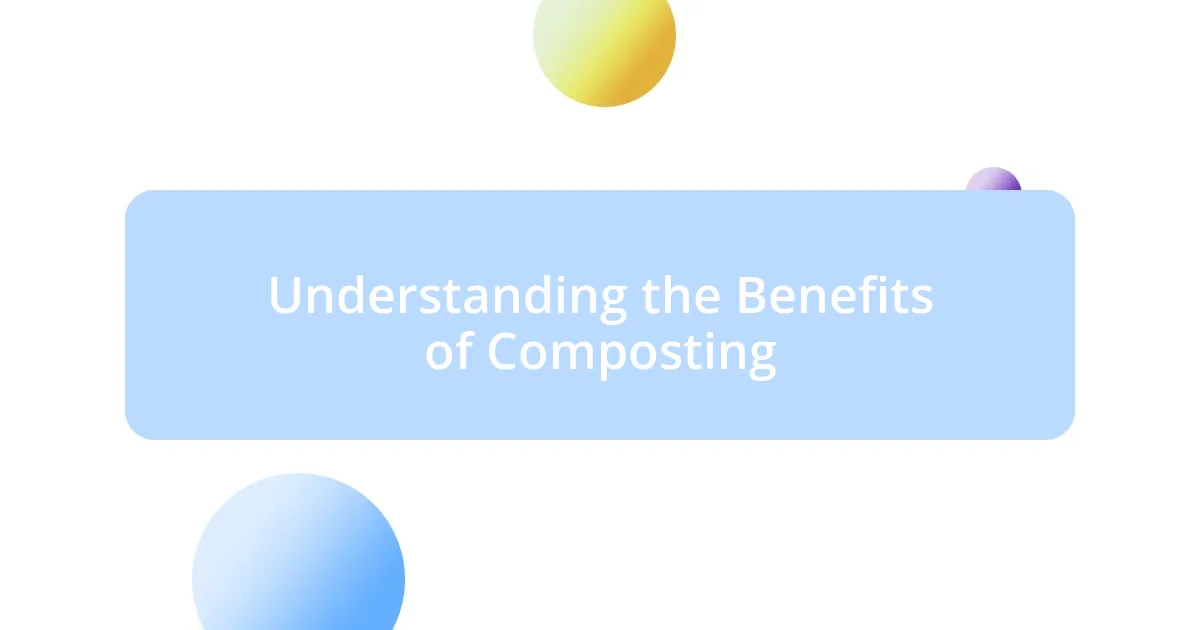
Understanding the Benefits of Composting
Understanding the Benefits of Composting
Composting is an organic alchemy that transforms food scraps into a gardener’s gold. I remember the first time I spread my homemade compost—it felt like giving my plants a special nutrient boost. The vibrant growth that followed was a clear reminder of how nutrient-rich compost can enhance soil health and support robust plant life.
Moreover, composting plays a crucial role in reducing waste. When I started keeping track of my kitchen scraps, I was amazed at how much material could have ended up in a landfill. By composting, I significantly decreased my household waste and contributed to a healthier planet by reducing methane emissions produced by rotting food. It’s a small but meaningful step toward living more sustainably.
Lastly, composting fosters a deeper connection with the environment. When I take the time to compost, I feel more attuned to the natural cycles around me. It’s not just about waste reduction; it’s about nurturing a healthier planet for future generations. Every time I sift through my compost, I’m reminded of my responsibility and impact on the ecosystem.
| Benefits of Composting | Description |
|---|---|
| Soil Enrichment | Compost improves soil structure and fertility, providing essential nutrients for plants. |
| Waste Reduction | Composting significantly decreases the amount of organic waste that goes to landfills. |
| Environmental Impact | Reduces methane emissions and promotes biodiversity in ecosystems. |
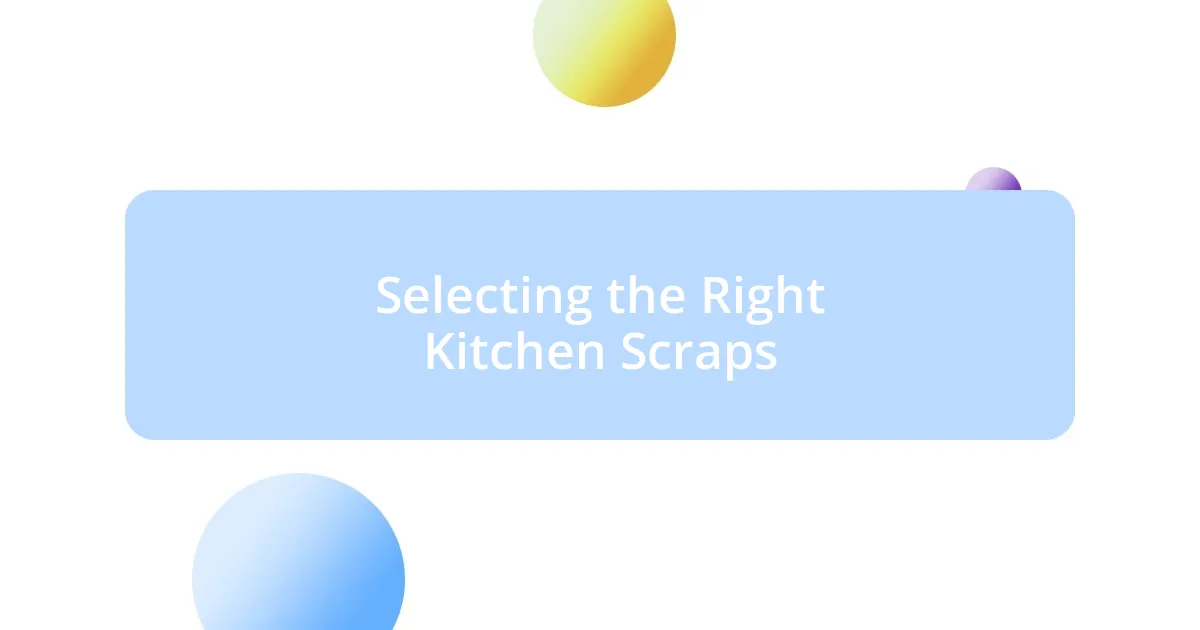
Selecting the Right Kitchen Scraps
Selecting the right kitchen scraps is crucial for a successful composting journey. I’ve learned through trial and error that not all scraps are created equal. When I first ventured into composting, I threw in everything without much thought. But over time, I discovered that some items break down more effectively and contribute more nutrients than others.
Here’s a quick guide to help you choose the best scraps for your compost:
- Fruit and Vegetable Peels: Excellent sources of nitrogen, they boost microbial activity.
- Coffee Grounds: Rich in nitrogen and attract beneficial worms.
- Eggshells: Provide calcium, which is essential for healthy plant growth.
- Dried Leaves and Yard Waste: Add carbon, balancing the compost ecosystem.
- Whole Grains or Bread: Break down easily, adding nutrients.
I’ve seen much better results since I became more selective. In fact, when I added eggshells to my mix, I was pleasantly surprised to see how my tomato plants just flourished! It’s all about finding that right balance and recognizing the value in what goes into your compost heap.
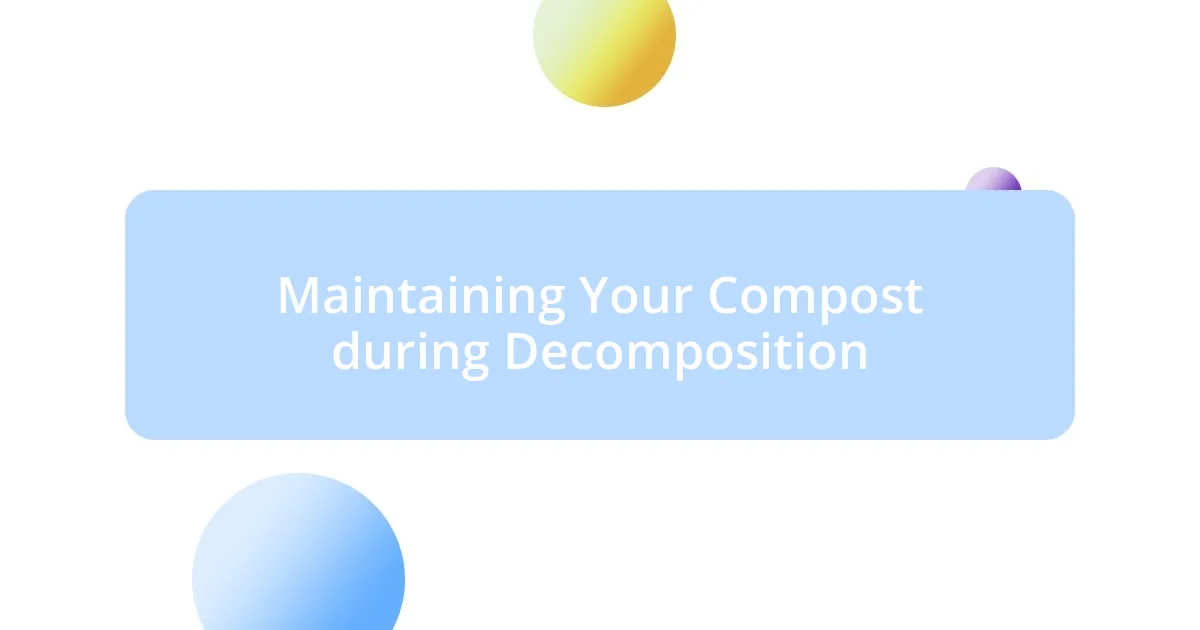
Maintaining Your Compost during Decomposition
Maintaining your compost during decomposition is key to achieving that rich, crumbly end product we all aim for. I remember the first time I noticed my small compost pile starting to smell a bit too ripe; it was a clear signal that I needed to intervene. Regularly turning the pile not only aerates it, fostering the growth of beneficial microbes, but it also helps to avoid unpleasant odors. Have you ever been surprised by a sudden compost smell? That’s nature’s way of telling you something isn’t quite right!
In my experience, monitoring moisture levels is just as crucial. Too much water can lead to anaerobic conditions where decomposition slows, while too little can dry out your pile and stall the process altogether. I’ve found that sprinkling some dried leaves or shredded newspaper into a wet compost mix helps absorb excess moisture; it’s like a sponge for my compost. When I pay attention to these details, the transformation from scraps to rich compost feels almost magical.
Adding the right mix of greens (like fruit scraps) and browns (dry leaves and paper) is where the real art of composting comes into play. I’ve learned to keep a balance that encourages health in my pile. One day, I added too many kitchen scraps and watched as the pile swelled, only to become compacted later. It wasn’t until I adjusted my ratio and added more browns that everything started to decompose uniformly, creating that dark, nutrient-rich compost I was after. Isn’t it rewarding to see what a little balance can do in both composting and life?
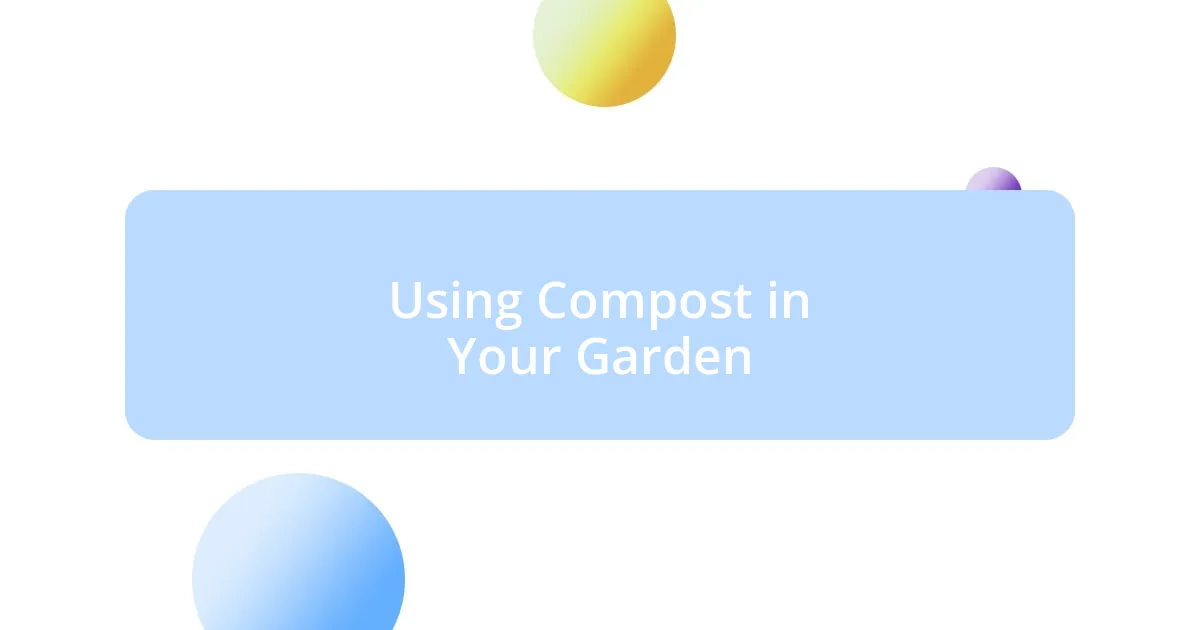
Using Compost in Your Garden
After spending months nurturing my compost, seeing it transform into rich, dark gold felt surreal. When I first started applying it to my garden, I was both anxious and excited. Would my plants thrive as I’d hoped? I vividly recall the moment I mixed that compost into the soil—everything just seemed to come alive! You could almost feel the eagerness of the earth to absorb those nutrients.
Using compost in the garden adds a nutrient-rich layer to your plants, promoting healthier growth and supporting vibrant blooms. One spring, I spread a generous amount around my roses, and they responded with such lush, fragrant flowers that I couldn’t help but smile. It was as if they were thanking me for the love and care poured into the compost process. Trust me, the joy of seeing those beautiful blooms is unmatched, and it reminds me just how impactful composting can be for both me and my plants.
I also noticed that compost aids in moisture retention, which is a game-changer during dry spells. I’ve experienced some frustrating droughts in my garden, but after incorporating compost, the soil stayed surprisingly moist for longer. Have you ever felt that relief when your plants look healthy despite challenging weather? Using compost is like giving them a cozy blanket of nutrition and protection. It’s not just about the science; it’s about building a resilient garden that thrives through the seasons.












